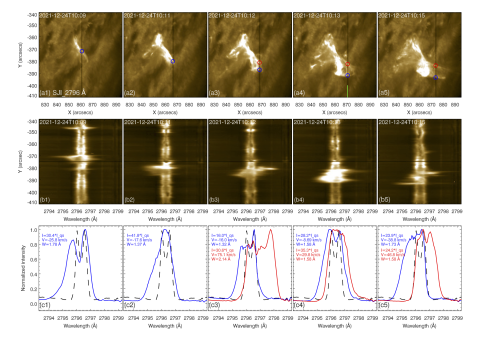Researchers from the Yunnan Observatories, Chinese Academy of Sciences, have achieved significant progress in unraveling the confined solar filament eruptions. Dr. XU Zhe and Researcher YAN Xiaoli conducted detailed imaging and spectroscopic observations of a unique filament eruption, by using data from the Interface Region Imaging Spectrograph (IRIS) and the Solar Dynamics Observatory (SDO). Their findings highlight the crucial role of external reconnection in confining solar eruptions. The research results were published in the Monthly Notices of the Royal Astronomical Society.
Solar filaments, often associated with magnetic flux ropes, play a vital role in solar eruptions. In this study, the researchers focused on a helical filament thread that detached from an active region filament. The entire eruption process consists of two distinct stages. In the first stage, the filament thread rose slowly and was obstructed due to flux pile-up in its front. This obstruction led the filament thread reconnect with the nearby loops, resulting in an increase in the volume of the magnetic flux rope. The connectivity of the flux rope also changed due to its footpoint migration. Subsequently, the newly formed flux rope was more unstable, and became the driver of the rapid eruption in the second stage. It ascended into the upper atmosphere and initiated the magnetic reconnection with the overlying field. Eventually, the flux rope was totally disintegrated, producing several solar jets along the overlying field.
These observational results demonstrate that external reconnection between the magnetic flux rope and the overlying magnetic field plays a crucial role in the confined solar filament eruptions. This event provides significant implications for our understanding of solar activity. The study was supported by the National Science Foundation of China ( NSFC) and the Yunnan Key Laboratory of Solar Physics and Space Science.

Figure 1, a confined solar filament from IRIS. Image by XU.
Contact:
XU Zhe
Yunnan Observatories, CAS
Email: xuzhe6249@ynao.ac.cn